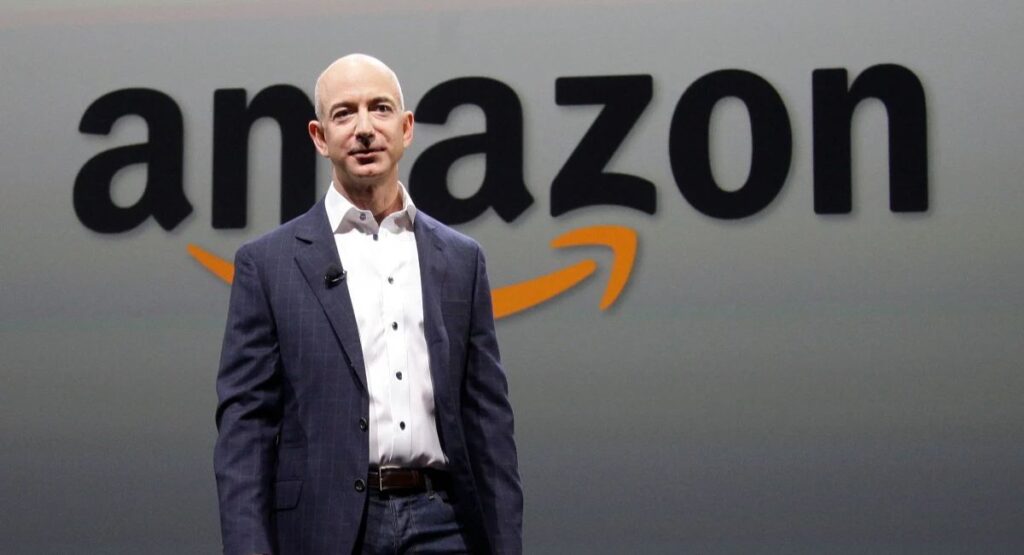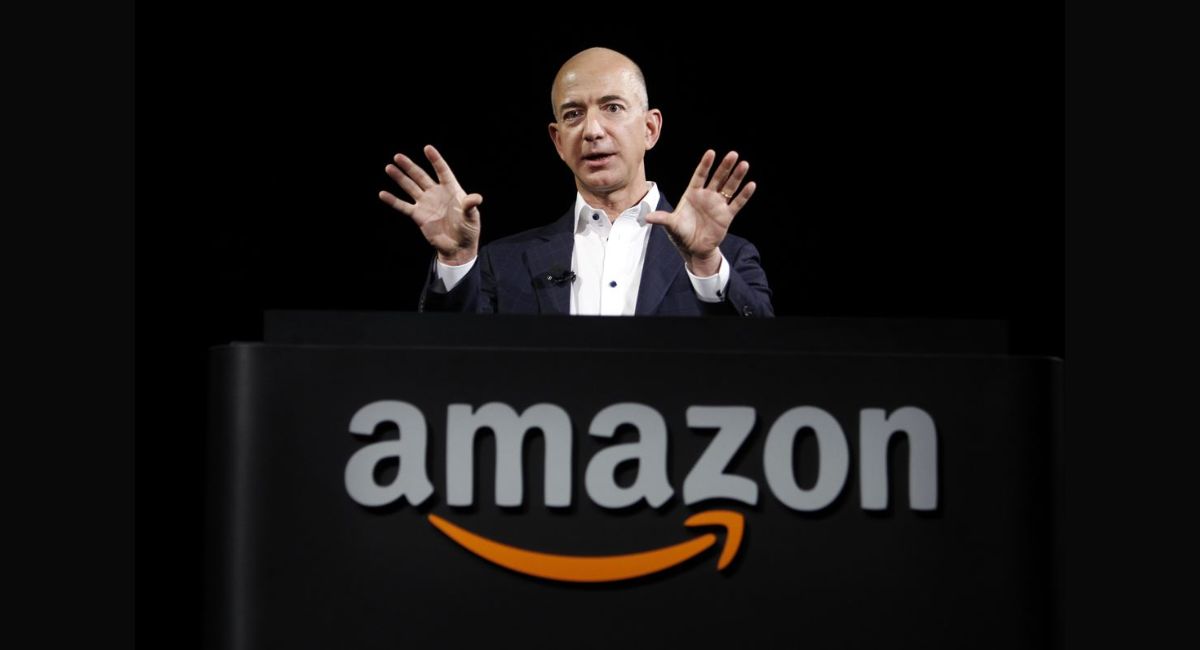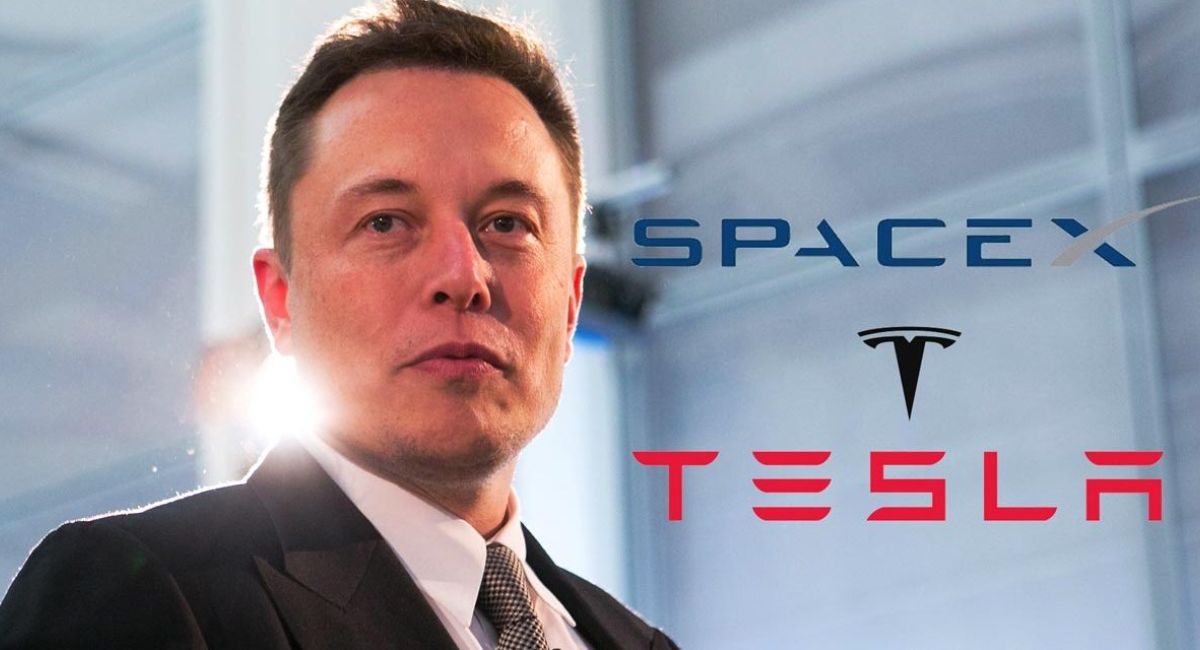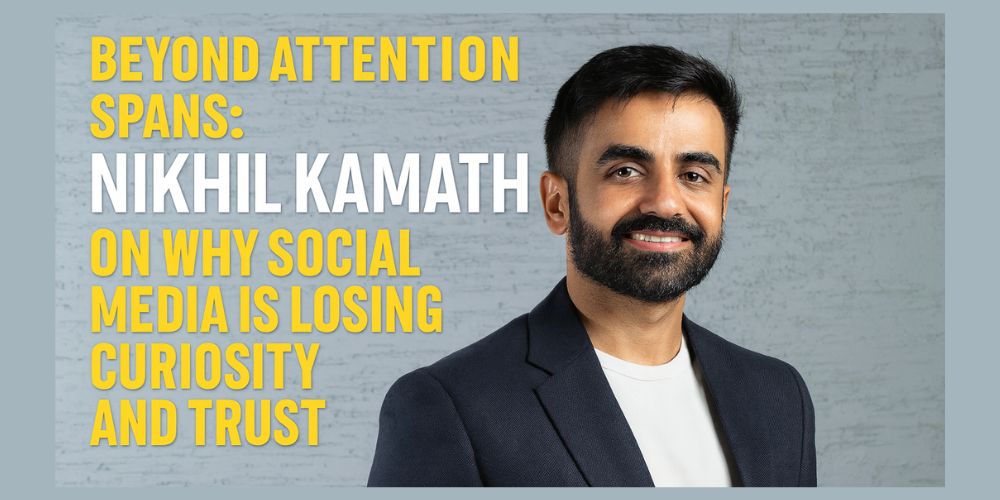Jeff Bezos, the founder of Amazon, is one of the most influential entrepreneurs of the 21st century. Known for his forward-thinking mindset and relentless pursuit of innovation, Bezos transformed a simple online bookstore into the world’s largest e-commerce and cloud computing empire. His vision was not just about selling products online but about creating an ecosystem where technology, convenience, and customer satisfaction meet seamlessly.
READ MORE : 10 Indian Startup Founders Who Changed the Game in the Last Decade
Introduction to Jeff Bezos :
- Born: January 12, 1964, in Albuquerque, New Mexico, USA
- Education: Bachelor’s degree in Electrical Engineering and Computer Science from Princeton University (1986)
- Occupation: Entrepreneur, Investor, Philanthropist
- Title: Founder and Executive Chairman of Amazon; Founder of Blue Origin; Owner of The Washington Post
The Simple Idea That Changed Global Shopping Habits:
Jeff Bezos recognized the untapped potential of the internet in the early 1990s. His idea was simple yet revolutionary to build an online platform that offered customers everything they needed, starting with books. This single idea evolved into Amazon, a company that redefined convenience, personalization, and the global shopping experience.
Early Life of Jeff Bezos – The Foundation of Innovation
Jeff Bezos’s journey to becoming one of the world’s most influential entrepreneurs began long before Amazon. His early life was marked by curiosity, intelligence, and a passion for understanding how things worked. These traits laid the foundation for his innovative mindset and visionary thinking that would later transform online shopping and e-commerce.
Childhood Curiosity and Early Education
From a young age, Jeff Bezos demonstrated remarkable curiosity and a drive to explore new ideas. His early experiences shaped his problem-solving skills and entrepreneurial instincts.
- Loved science, technology, and building gadgets as a child
- Excelled in math and computer science during high school
- Developed a habit of questioning the world and finding innovative solutions
Journey from Princeton to Wall Street
Jeff Bezos attended Princeton University, earning a degree in Electrical Engineering and Computer Science. His time at Princeton provided both the technical expertise and analytical thinking necessary to pursue ambitious business ideas.
- Graduated from Princeton in 1986 with top honors
- Worked at Fitel, a fintech startup, gaining early entrepreneurial experience
- Moved to Bankers Trust and later D. E. Shaw & Co., where he excelled as a financial analyst
The Turning Point – Spotting the Rise of the Internet
Jeff Bezos recognized the immense potential of the internet in the early 1990s, a time when online commerce was virtually nonexistent. This insight became the turning point in his career.
- Saw exponential growth of internet usage in the early ’90s
- Created a list of 20 products with high online sales potential; chose books as the first focus
- Left a stable Wall Street career to pursue the dream of an online bookstore
READ MORE : Ghazal Alagh Biography – Inspiring Journey from Artist to Entrepreneur
The Birth of Amazon – Jeff Bezos’s Big Leap
The story of Amazon began when Jeff Bezos decided to leave the security of Wall Street to follow his ambitious vision. This bold move marked the start of one of the most transformative journeys in e-commerce history. His focus on innovation, customer experience, and long-term thinking became the foundation of Amazon’s success.
1994 – Leaving a Secure Job to Chase a Dream
Jeff Bezos was a rising star on Wall Street, but he had a bigger vision: to create a company that would redefine shopping.
- Left his job at D. E. Shaw & Co., a prestigious investment firm
- Risked financial stability to pursue the idea of an online retail business
- Believed the internet had untapped potential to reach millions of customers
The Original Business Plan for Amazon.com
Jeff Bezos drafted a clear and strategic business plan that focused on rapid growth and scalability.
- Identified books as the first product due to their universal demand and wide selection
- Designed Amazon to operate as an online bookstore with a customer-first approach
- Created a scalable model to expand into other product categories over time
First Steps – Garage Beginnings and Product Focus
Amazon’s humble beginnings reflect how one simple idea, combined with determination, can transform industries.
- Started operations in a garage in Seattle, building the website from scratch
- Focused on creating a user-friendly interface for online book purchases
- Prioritized customer experience with features like reviews, recommendations, and fast shipping
Jeff Bezos Biography in Brief
| Year | Milestone | Description |
| 1994 | Founded Amazon | Started as an online bookstore |
| 1997 | Amazon IPO | Entered NASDAQ, gaining investor trust |
| 2000 | Created Blue Origin | Began space exploration journey |
| 2013 | Bought The Washington Post | Expanded into media |
| 2021 | Stepped down as CEO | Focused on innovation & philanthropy |
READ MORE : Top 5 Entrepreneur Stories That Shaped 2025 Startups
How Jeff Bezos Changed Online Shopping Forever
Jeff Bezos didn’t just build a company; he redefined the entire online shopping experience. Through a combination of innovation, customer focus, and forward-thinking strategies, Amazon transformed how people shop, setting new global standards for e-commerce.
Customer-First Philosophy – Focus on Trust and Speed
At the heart of Amazon’s success is Jeff Bezos’s commitment to putting customers first. His philosophy was simple: make shopping reliable, convenient, and trustworthy.
- Fast and reliable shipping: Bezos knew that speed was critical to customer satisfaction. He invested heavily in fulfillment centers and logistics to ensure orders arrived quickly, even for small or remote markets.
- Easy-to-use interface: Amazon’s website was designed for simplicity, making it easy for anyone to browse, search, and purchase products without friction.
- Trust through transparency: Policies like hassle-free returns and user reviews built confidence, encouraging shoppers to try online purchasing at a time when trust was low.
The Role of Innovation in Logistics and Delivery
Logistics became a competitive advantage for Amazon under Jeff Bezos:
- Global fulfillment network: Bezos established warehouses strategically across regions, reducing delivery times and increasing efficiency.
- Automated systems and robotics: Amazon implemented technology in warehouses to speed up processing and reduce human error.
- Data-driven inventory management: Predictive algorithms helped forecast demand, ensuring products were available and shipments were on time.
Introduction of Personalized Recommendations
Amazon pioneered personalization in online shopping, changing customer expectations forever:
- Recommendation engine: By analyzing browsing history, past purchases, and customer behavior, Amazon suggests products that shoppers are more likely to buy.
- Enhanced user engagement: Personalization kept customers browsing longer, increasing the chance of additional purchases.
- Customer-centric experience: Shoppers felt like Amazon understood their needs, which strengthened loyalty and satisfaction.
Prime Membership – A Revolution in Customer Loyalty
Jeff Bezos introduced Amazon Prime to reward and retain loyal customers:
- Free and fast shipping: Members received two-day shipping on millions of items, setting a new standard for e-commerce.
- Digital content and exclusive perks: Prime expanded beyond shipping to include streaming, e-books, and early access deals.
- Encouraging repeat purchases: Membership created a habit of shopping with Amazon first, boosting retention and lifetime value.
Key Innovations That Changed Online Shopping
| Innovation | Year Introduced | Impact on Online Shopping |
| Fast Shipping & Fulfillment Network | 1995–2005 | Reduced delivery times, increased customer trust and satisfaction |
| Personalized Recommendations | 2000 | Improved engagement, cross-selling, and customer experience |
| Amazon Prime Membership | 2005 | Built loyalty, encouraged repeat purchases, and strengthened brand trust |
| Automated Warehouses & Robotics | 2012 | Increased efficiency, reduced errors, and sped up order processing |
READ MORE : How Elon Musk Built Tesla, SpaceX, and Neuralink: A Deep Dive into His Empire
Jeff Bezos’s Business Philosophy
Jeff Bezos’s approach to business goes beyond strategies and numbers; it’s rooted in a philosophy that has guided Amazon from a garage startup to a global e-commerce leader. His principles focus on long-term thinking, calculated risk-taking, and putting customers at the center of every decision. These core beliefs not only shaped Amazon’s growth but also provided lessons for entrepreneurs worldwide.
Think Long-Term, Not Short-Term
One of the most defining aspects of Jeff Bezos’s philosophy is his focus on the long game:
- Patience over quick profits: Bezos prioritized growth and market share over short-term earnings, allowing Amazon to reinvest in innovation and infrastructure.
- Vision for future markets: From cloud computing to AI, his decisions often anticipated trends years before competitors acted.
- Sustainable growth: Long-term planning ensured that Amazon remained adaptable, resilient, and ahead in the e-commerce landscape.
Take Bold Risks and Learn from Failure
Risk-taking and learning from failure are central to Bezos’s entrepreneurial mindset:
- Calculated experimentation: Jeff Bezos encouraged trying new ideas, even if they might fail, to discover opportunities that competitors overlooked.
- Learning from mistakes: Failures like the Fire Phone taught Amazon valuable lessons, fueling future successes like Alexa and AWS.
- Innovative culture: This mindset created an environment where employees were motivated to think creatively and challenge the status quo.
Build a Strong Customer-Centric Culture
At the heart of Jeff Bezos’s philosophy is an obsession with the customer:
- Customer-first decisions: Every product, service, or process is designed to improve the user experience.
- Continuous improvement: Amazon constantly evolves its platform based on customer feedback, making shopping easier and more reliable.
- Loyalty and trust: By prioritizing the customer over short-term gains, Bezos built a brand that people trust worldwide.
Core Principles of Jeff Bezos’s Business Philosophy
| Principle | Description | Example |
| Long-Term Thinking | Prioritize growth and innovation over immediate profit | Reinvesting profits into logistics and AWS |
| Bold Risk-Taking | Encourage experimentation and learning from failure | Launching Amazon Web Services & Alexa |
| Customer Obsession | Make all decisions centered on improving customer experience | Fast shipping, Prime Membership, personalized recommendations |
READ MORE : How Nithin Kamath Bootstrapped Zerodha into India’s Largest Stockbroker
Lessons Entrepreneurs Can Learn from Jeff Bezos
Jeff Bezos’s journey from a small online bookstore to a global e-commerce empire offers valuable lessons for entrepreneurs. His strategies and mindset emphasize innovation, resilience, and long-term thinking principles that can be applied across industries.
- Embrace Change and Innovation: Jeff Bezos always encouraged experimenting with new ideas to stay ahead in the market. Innovation, from AWS to Alexa, became central to Amazon’s growth.
- Focus on Long-Term Goals: Bezos prioritized sustainable growth over short-term profits, reinvesting in infrastructure and services like Amazon Prime to secure the future.
- Build Scalable Systems: Instead of relying on shortcuts, Bezos created robust systems that could handle exponential growth. Fulfillment centers and logistics networks are prime examples.
- Learn from Failure: Failure was treated as a learning opportunity, not a setback. Lessons from projects like the Fire Phone helped improve future products and strategies.
- Think Globally, Act Locally: While expanding Amazon worldwide, Bezos emphasized understanding local markets. Regional warehouses and tailored services ensured global efficiency and customer satisfaction.
The Global Impact – GEO and Market Optimization
Jeff Bezos’s vision extended far beyond the U.S., reshaping retail and e-commerce on a global scale. Amazon’s expansion demonstrates the power of combining data, technology, and local market understanding.
Reshaping Local Retail in the US, UK, and Beyond
- Amazon transformed how people shop by offering convenience, wide selection, and competitive pricing.
- Local retailers adapted or innovated to compete with Amazon’s fast shipping and online-first model.
Using AI, Data, and Regional Optimization
- Amazon leverages AI and big data to predict customer preferences and manage inventory efficiently.
- Regional warehouses and logistics ensure fast delivery tailored to local demand.
Bezos’s Influence on Worldwide E-Commerce Ecosystems
- Set global standards for customer experience, delivery speed, and personalization.
- Inspired entrepreneurs and companies worldwide to adopt digital-first strategies and customer-centric approaches.
Global Impact of Amazon
| Region | Key Change | Impact |
| US | Fast shipping & Prime | Increased e-commerce adoption |
| UK | Localized delivery & services | Enhanced customer satisfaction |
| Global | AI-driven personalization | Set new e-commerce standards |
Conclusion:
Jeff Bezos’s story shows how a single bold idea can change the world. From starting Amazon in a small garage to building a global e-commerce empire, his journey demonstrates the power of vision, perseverance, and innovative thinking. His focus on long-term goals, customer obsession, and willingness to take calculated risks provides a roadmap for entrepreneurs and business leaders alike.
By embracing change, learning from failures, and building scalable systems, Bezos not only transformed online shopping but also reshaped the way the world approaches technology, retail, and global business. His story continues to inspire innovation and ambition across industries worldwide.
The Success Story of Amazon: Jeff Bezos’ Vision That Changed the World ( source )
Frequently Asked Questions
- Who is Jeff Bezos?
The founder of Amazon and one of the world’s most influential entrepreneurs. - When did Jeff Bezos start Amazon?
In 1994, from his garage in Seattle. - What was Amazon’s first product?
Books before expanding to everything online. - How did Jeff Bezos change online shopping?
By focusing on convenience, trust, and customer satisfaction. - What is Jeff Bezos’s leadership style?
Data-driven, innovative, and customer-obsessed. - What companies does Jeff Bezos own?
Amazon, Blue Origin, and The Washington Post. - What are Jeff Bezos’s core principles?
Innovation, customer obsession, and long-term thinking. - What is the global impact of Amazon?
It reshaped retail, logistics, and cloud computing worldwide. - When did Jeff Bezos step down as CEO?
In 2021, handing over leadership to Andy Jassy. - What can entrepreneurs learn from Jeff Bezos?
Take calculated risks, think big, and always focus on the customer.















